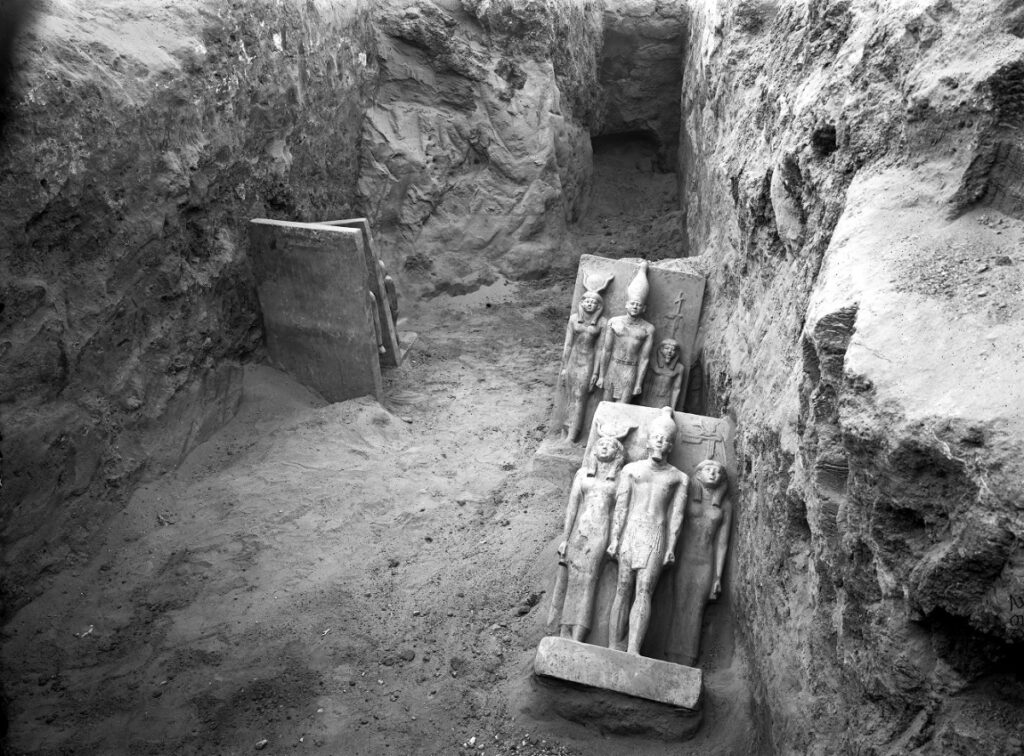In 1902, an Egyptological “summit” was held on the terrace of the Mena House hotel in Cairo. This event was organized by Gaston Maspero, the director of the Egyptian Antiquities Service, and featured some of the era’s leading archaeologists.
The Gathering of Great Minds
Among the notable attendees were German Ludwig Borchardt, representing the German archaeologist George Steindorff, Italian Ernesto Schiaparelli, and North American George Andrew Reisner, known as the “American Flinders Petrie” for his precise and meticulous methods. The purpose of the meeting was to allocate excavation areas on the Giza plateau.
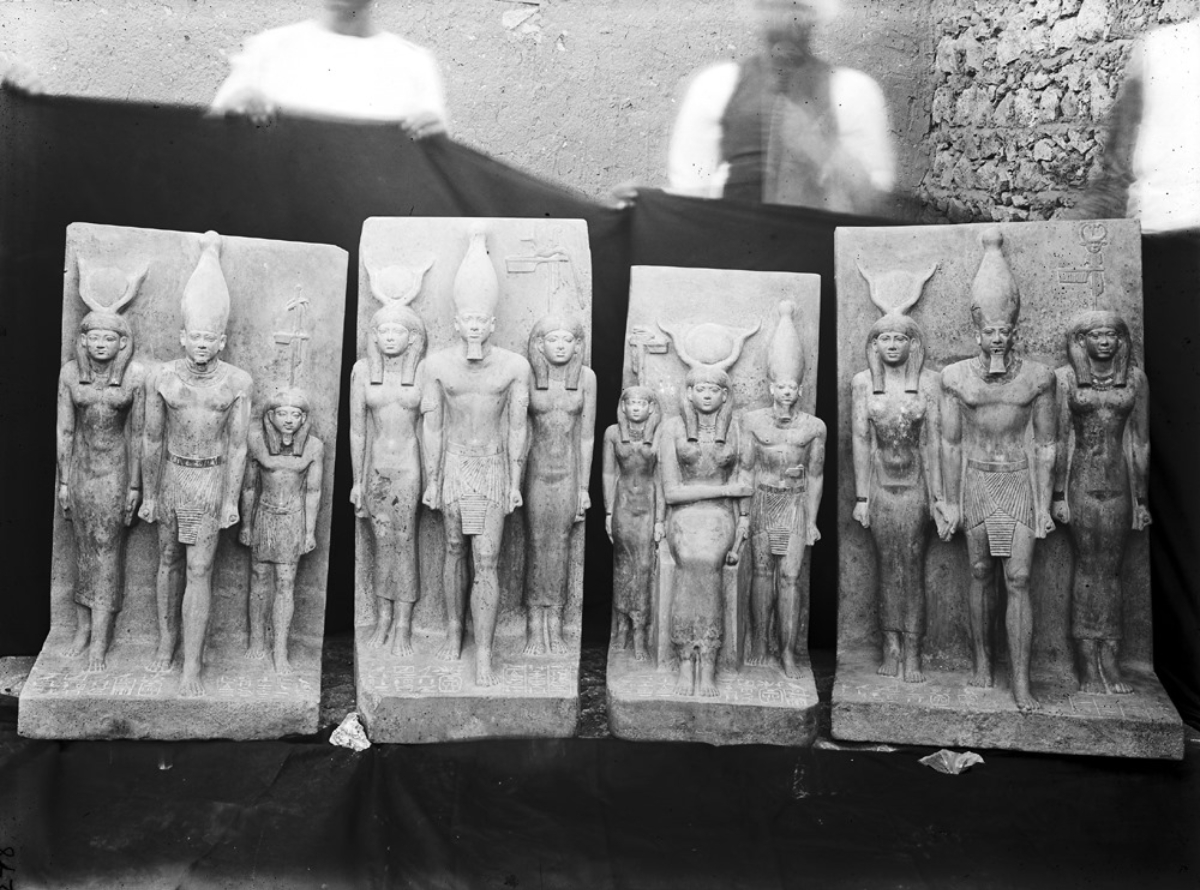
- Germans: Assigned the sector of the pyramid of Khafre.
- Italians: Given part of the cemetery north of the pyramid of Khafre.
- North Americans: Received the entire funerary complex of Pharaoh Menkaure, who built the smallest pyramid in Giza.
The Excavation Begins
In 1906, four years after the summit, archaeologist George Reisner began excavating the Menkaure funerary complex, leading an expedition organized by Harvard University.
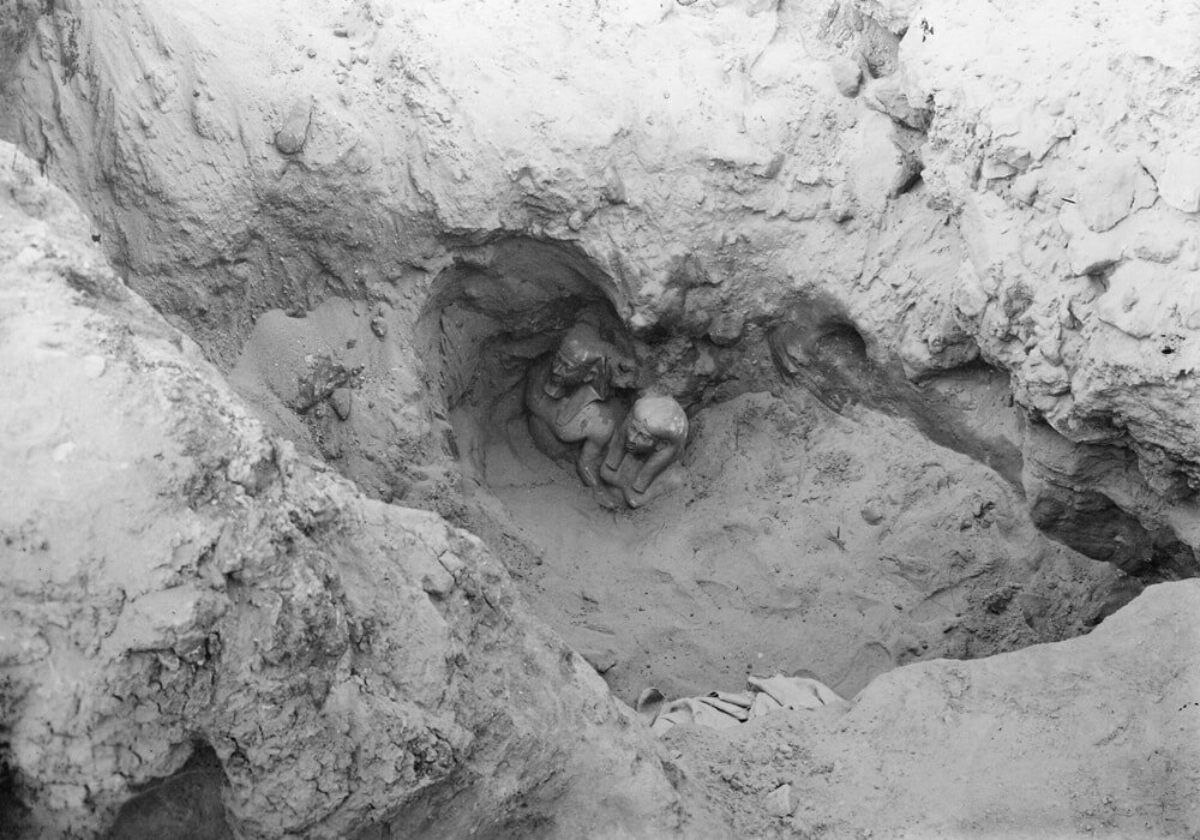
Statues Everywhere
Although the pyramid of Menkaure had already been explored in 1834 by the British Richard Vyse, Reisner focused on other elements of the complex. His efforts soon paid off. Along the east face of the pyramid, Reisner discovered:
- The upper temple, where fragments of a colossal seated alabaster statue of the pharaoh were found.
- The remains of the road connecting this building with the lower temple or valley, where the purification rites of the king’s mummy took place.
- The funerary chapels of the three satellite pyramids belonging to the wives of Menkaure.
- Tombs of funerary priests in charge of the royal cult.
A Sensational Discovery
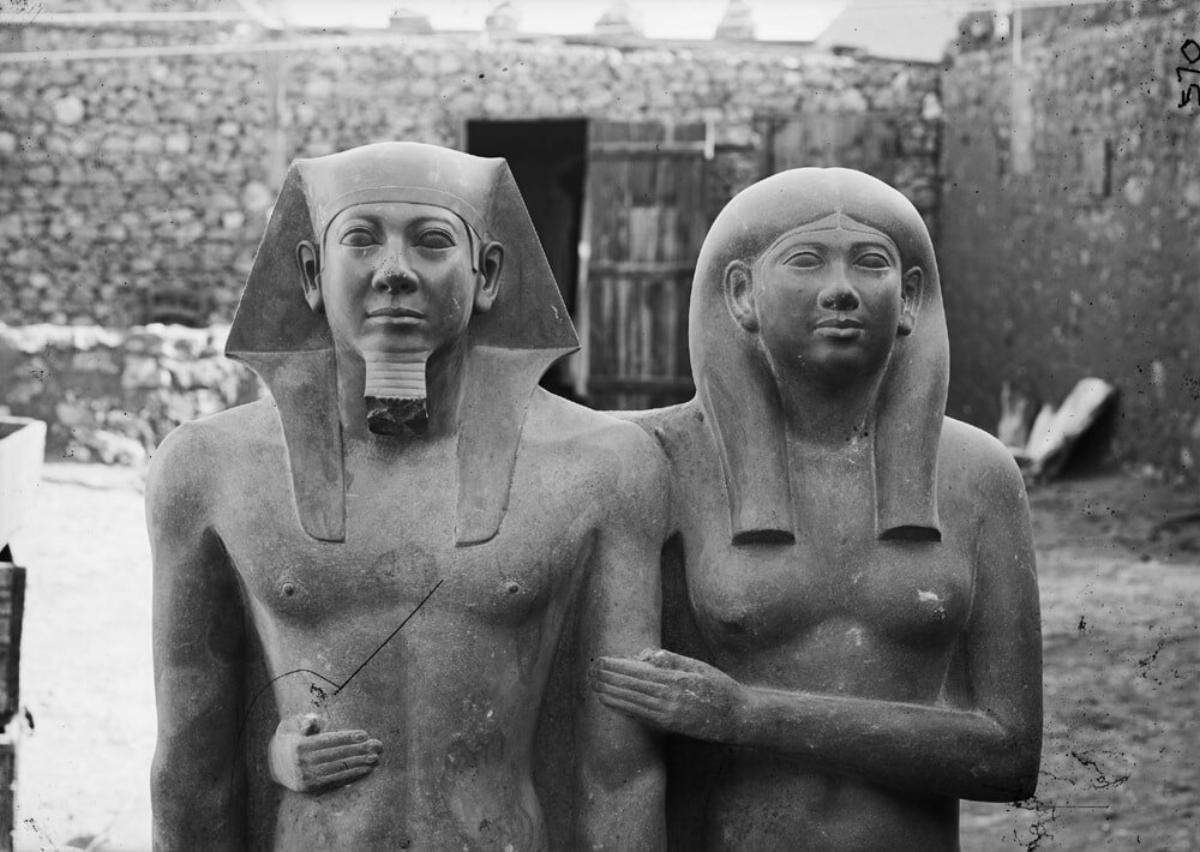
In June 1908, Reisner concentrated on the Lower Temple of Menkaure. This structure, made of raw brick with a limestone foundation, seemed hastily finished, possibly due to the king’s unexpected death. At the eastern entrance, a hall with four columns, flanked by warehouse-like rooms, led to a large patio that accessed the offering room with six columns and the sanctuary.
In July 1908, Reisner made a sensational discovery in these rooms. Joseph Lindon Smith, the expedition’s illustrator, recounted: “I myself shared with Reisner the exciting opening of each of those rooms full of sculptures. Two alabaster portraits of the king, four complete statues, and the triad. Reisner could barely contain his excitement…”
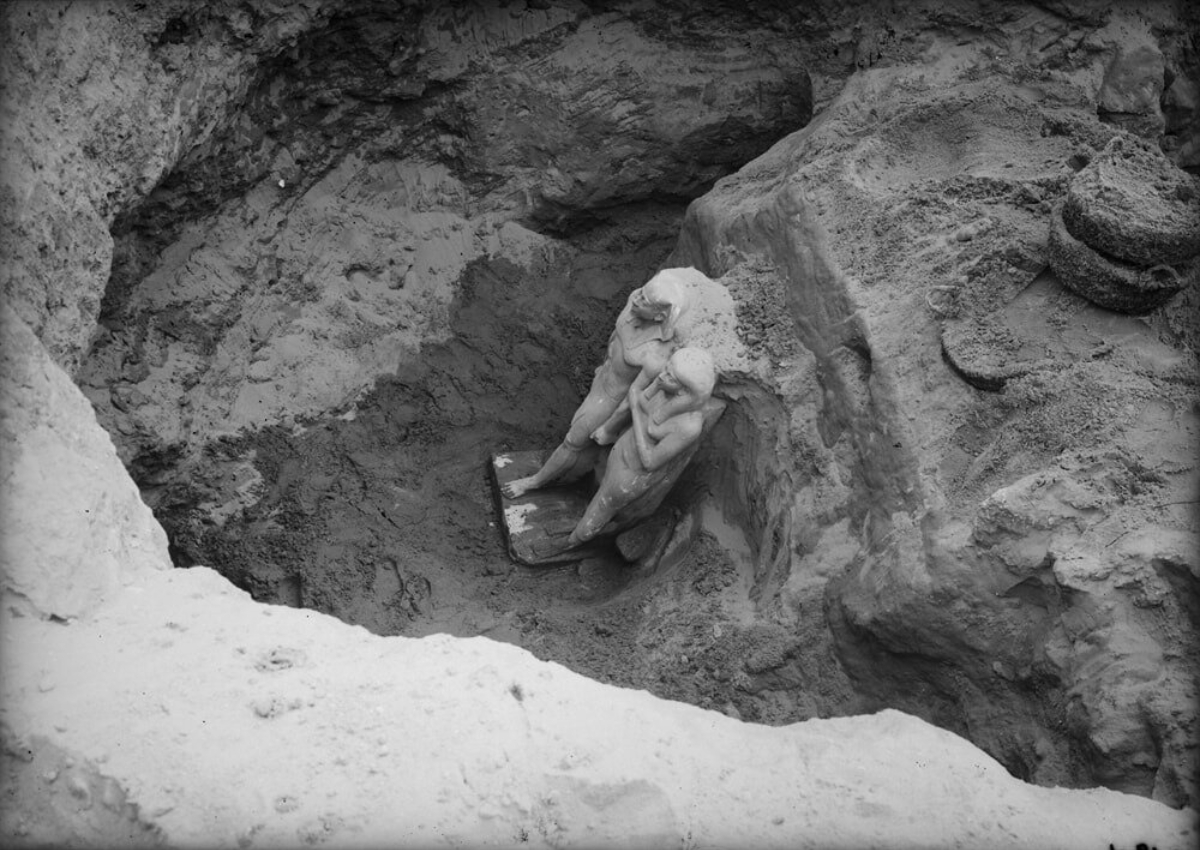
Magnificent sculptural groups emerged from the rubble, including eight Greywacke statues (a type of sandstone) each composed of three characters: the pharaoh with the white crown of Upper Egypt, the goddess Hathor with her headdress of two horns and the sun disk, and the personification of a nome or province of ancient Egypt. Four of these triads were fragmented and incomplete, but four others were found in excellent condition.
Masterpieces Unveiled
On January 8, 1910, another complete sculptural group was uncovered: a representation of the pharaoh, wearing a nemes (royal headdress), accompanied by a woman, possibly his wife, Queen Khamerernebty.
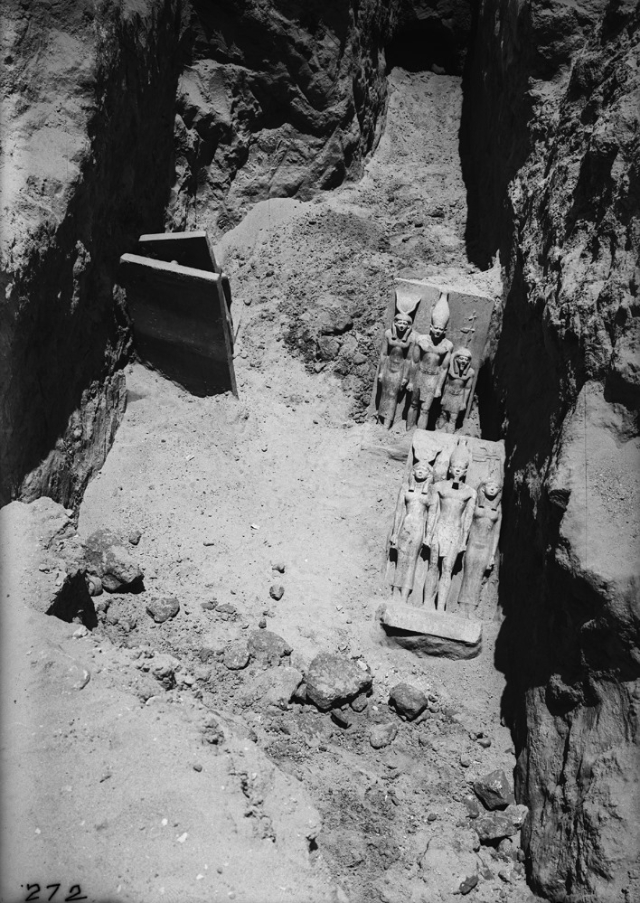
Reisner’s Contribution
George Reisner recovered a significant amount of material from the Menkaure funerary complex. Under the laws of archaeological find distribution at the time, Reisner brought one complete triad and the group of Menkaure with his wife, along with some fragments and the colossal alabaster statue of the pharaoh from his high temple, to the United States.
The remaining complete triads stayed in Egypt, preserving a piece of the country’s rich archaeological heritage.


